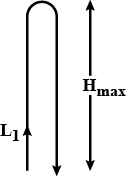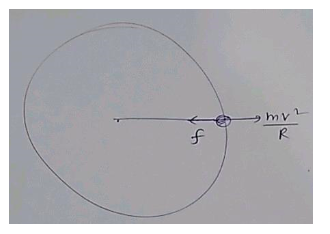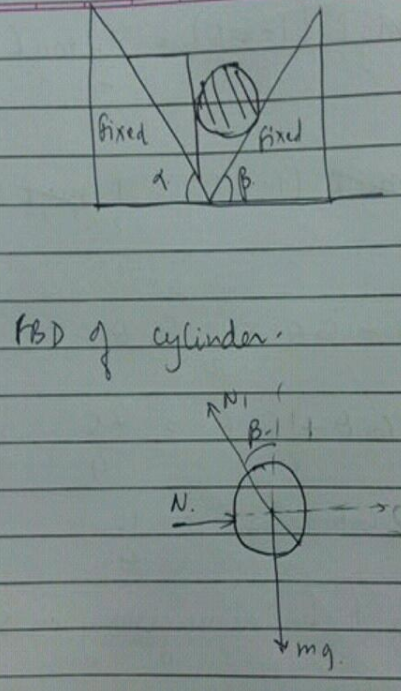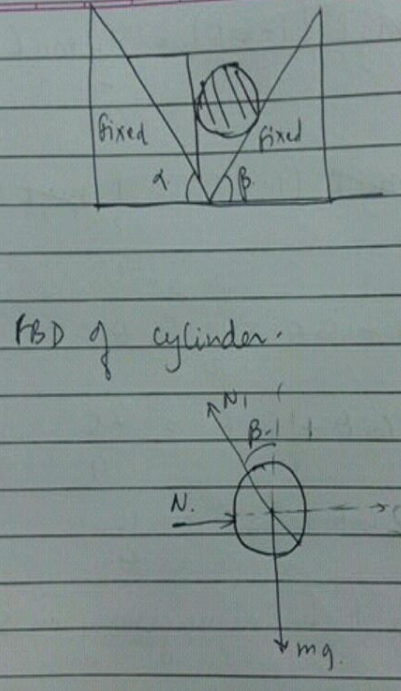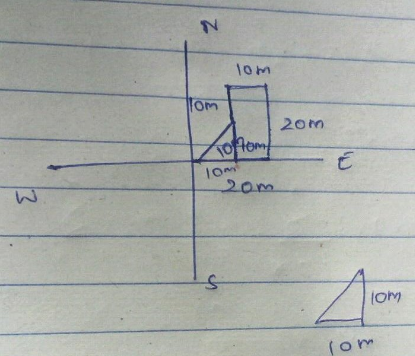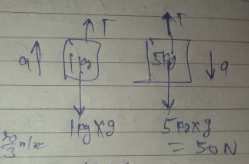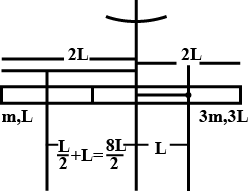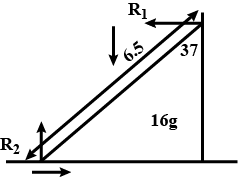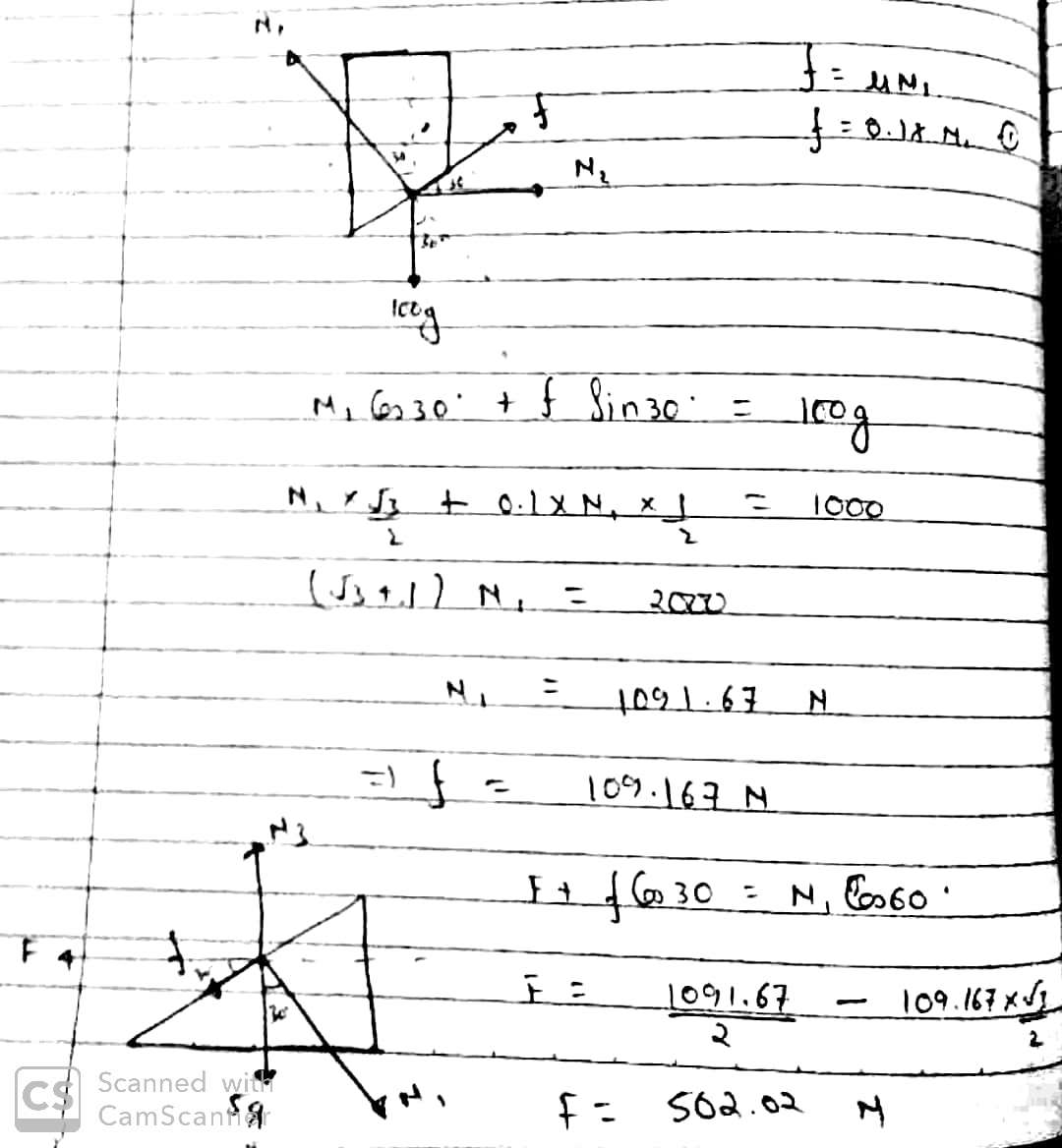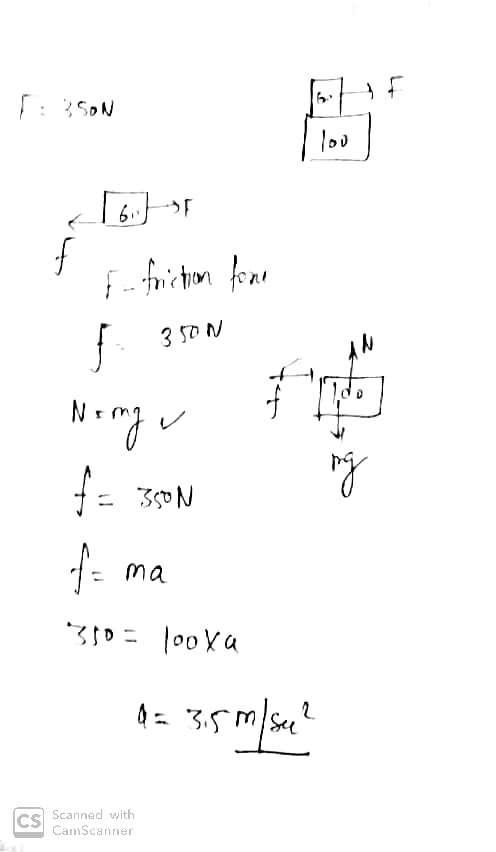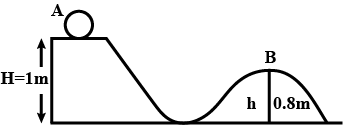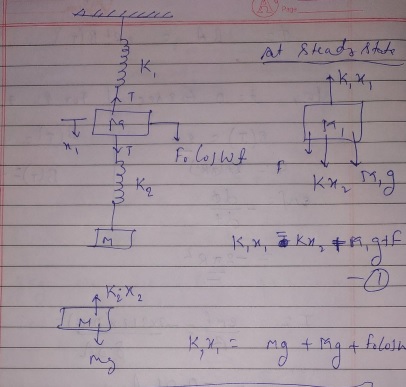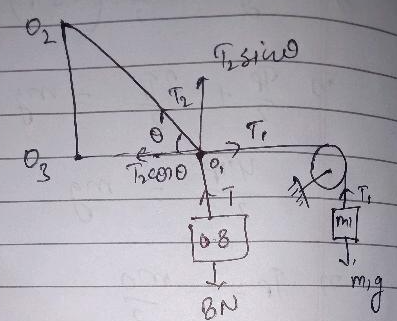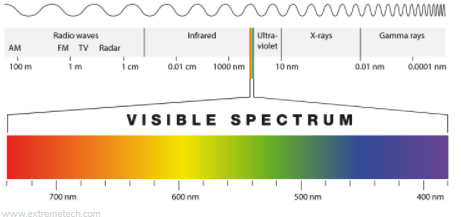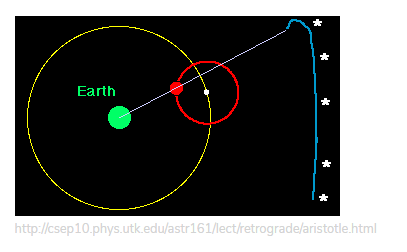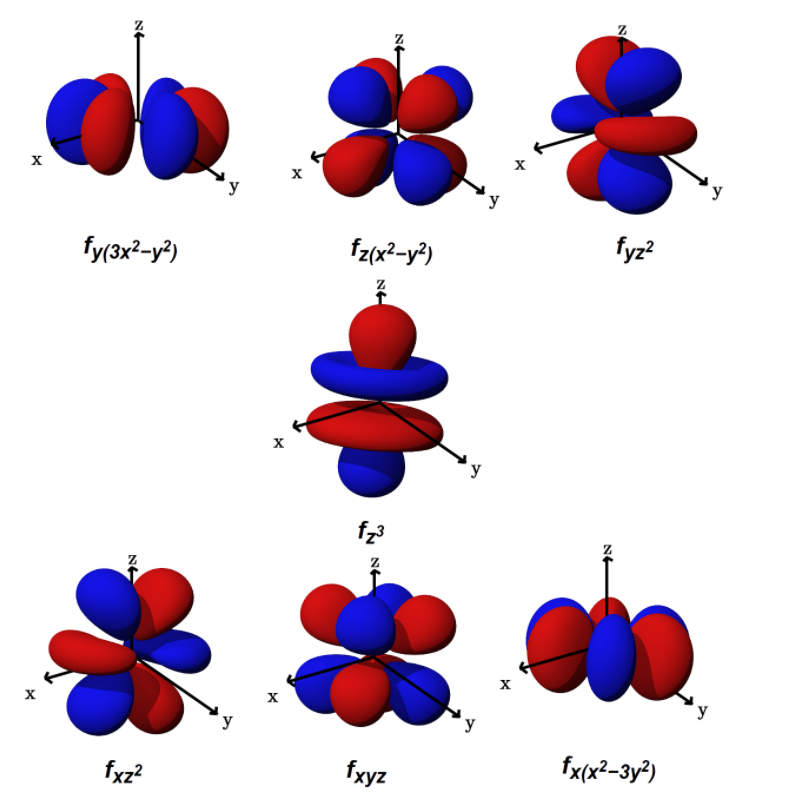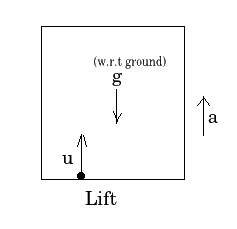Basic Science - Class 5 General Knowledge - Extra Questions
Why do the glaciers move?
Atom of which element has two protons and two electrons ?
How do you write an equation for the reaction between zinc metal and hydrochloric acid (aqueous) producing zinc chloride (aqueous) and hydrogen gas?
A man descending by parachute does it slowly. Why?
A tennis ball is thrown up and reaches a height of $$4.05 m$$ before coming down. What was its initial velocity? How much total time will it take to come down? Assume $$g = 10\ m/s^{2}$$.
Consider the situation shown in figure. The is released from rest and the block of mass $$1.0\ kg$$ is found to have a speed $$0.3\ m/s$$ after it has descended through a distance of $$1\ m$$. Find the coefficient of kinetic friction between the block and the table.
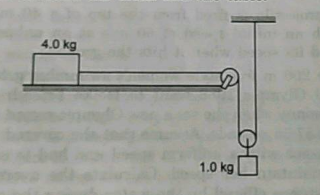
A cyclist speeding at $$18\ km/h$$ on a level road takes a sharp circular turn of radius $$3\ m$$ without reducing the speed. The co-efficient of static friction between the tyres and the road is $$0.1$$. Will the cyclist slip while taking the turn?
Prove that the angular momentum of a satellite of mass $$M_{s}$$ revolving round the earth of mass $$M_{e}$$ in an orbit of radius $$r$$ is equal to $$[GM_{e}M_{s}^{2}r]^{1/2}$$.
In the $$x-t$$ graph below, indicate the time when the average velocity is equal to the instance velocity.
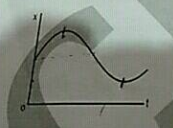
A car of mass $$m$$ is coasting on a horizontal surface. There is no friction between the car and the surface, but a force of air resistance acts on the car of magnitude $$F_{drag}(v) =kv^2$$. The initial velocity of the car is $$v_0$$.
As shown in the figure a person is pulling a mass 'm ' form ground on a fixed rough hemispherical surface upto the top of the hemisphere with with the help of a light inextensible string find the work done by tension in the string if radius of hemisphere is R and friction co-efficient is $$ \mu $$ Assume that the block is pulled with negligible velocity
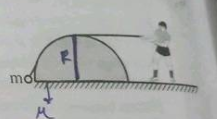
A cylinder and a wedge of same masses with vertical face , touching each other move along two smooth inclined planes forming the some angle and $$ \beta $$ respectively with the horizontal determine the force of normal N (in newton) exerted by the wedge on the cylinder , neglecting the friction between them if $$ m = \frac {1}{ \sqrt {3} } kg \alpha = 60^0 , \beta = 30^0 $$ and $$ g = 10 m/s^2 $$
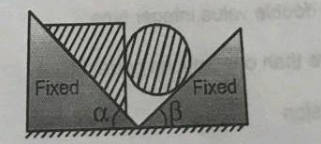
Diagram shows a velocity-times graph for a car starting from rest. The graph has three sections $$AB,BC$$ and $$CD$$.
In which section, car has a zero acceleration.
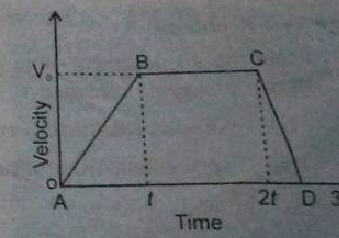
A car with a gun mounted on it is kept on horizontal friction less surface total mass of car , gun and shell is 0 kg mass of each shell is 1 kg if shell is fired horizontally with relative velocity 100 m/ sec with respect to gun what is the recoil speed of car after second shot in nearest integer ?
A cylinder and a wedge of same masses with vertical face , touching each other move along two smooth inclined planes forming the some angle and $$ \beta $$ respectively with the horizontal determine the force of normal N (in newton) exerted by the wedge on the cylinder , neglecting the friction between them if $$ m = \frac {1}{ \sqrt {3} } kg \alpha = 60^0 , \beta = 30^0 $$ and $$ g = 10 m/s^2 $$
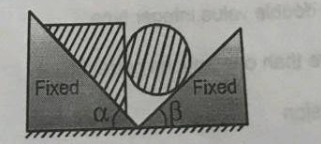
A particle if given a certain velocity v at point P as shown on a hemispherical smooth surface find the value of v (in m/s) such that when particle reaches Q , the normal reaction of surface becomes equal to particle's weight $$ [ R = 1.6 m , g = 10 m/s^2 ] $$
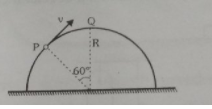
Diagram shows a velocity-times graph for a car starting from rest. The graph has three sections $$AB,BC$$ and $$CD$$.
Is the magnitude of acceleration higher or lower than that of retardation? Give Reason.
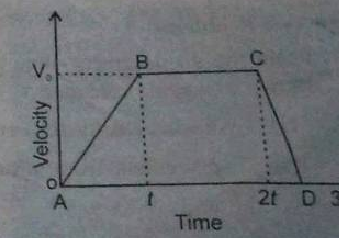
The position of a particle along the $$x-$$axis is given in centimeter by $$x=9.75+1.50 t^3$$, where $$t$$ is in second. Consider the time interval $$t=2\ s$$ to $$t=3\ s$$ and calculate the average velocity.
A person moves through a distance of $$20\ m$$ due to east, then moves through a distance $$20\ m$$ due north, then turns west and covers a distance of $$10\ m$$ and then turns south and covers a distance of $$10\ m$$. Find the displacement.
Find moment of inertia of a uniform annular disc of mass 100 g, having inner radius 10 cm and outer radius 20 cm, about an axis passing through its centre and perpendicular to its plane.
A boat with initial speed $$v_0$$ is showed by a frictional force $$F=b\,exp (-\alpha v)$$.find the time after which it stops.
Two masses of $$1\ kg$$ and $$5\ kg$$ are attached to the end of a massless string passing over a pulleys of negligible weight. The pulley itself is attached to a light spring balance as shown in figure. The masses start moving during the interval, the reading of spring balance will be
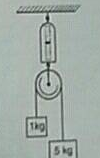
The position of a particle along the $$x-$$axis is given in centimeter by $$x=9.75+1.50 t^3$$, where $$t$$ is in second. Consider the time interval $$t=2\ s$$ to $$t=3\ s$$ and calculate the instantaneous velocity when the particle is mid way between its position at $$=2\ s$$ and $$t=3\ s$$.
The position of a particle along the $$x-$$axis is given in centimeter by $$x=9.75+1.50 t^3$$, where $$t$$ is in second. Consider the time interval $$t=2\ s$$ to $$t=3\ s$$ and calculate
Instantaneous velocity at $$t=2\ s$$.
A traffic police officer observes a fast moving car due to over speed officer starts his bike , accelerates uniformly to 90 kph in 8 s , and maintaining a constant velocity of 90 kph , overtakes the car 42 s after the car passed him if he overtakes the car after 18 s from the instant he starts , find the distance the officer travelled before overtaking the speed of the car
Two thin uniform rod $$ A ( M, L) $$ and $$ B ( 3M, 3L) $$are joined as shown find the MI about an axis passing through the centre of mass of system, of rods and perpendicular to the length

A 6.5 m long ladder rests against a vertical wall reaching a height of .0 m A 0 kg man stands half way up the ladder (a) find the torque of the force exerted by the man on the ladder about the upper end of the ladder (b) assuming the weight of the ladder to be negligible as compared to the man and assuming the wall to be smooth find the force exerted by the ground on the ladder.
If the particle is moving along the x-axis and the relation between acceleration and position (x) is given by a $$ = -9x\ m/s^{2} $$ . If velocity of the particle at x = 3m is zero, then the velocity of particle at origin is:
A ball is thrown up with velocity 20 m/s relative to ground in open lift moving up with speed 10 m/s at time of throwing and has an acceleration of $$2 m/s^2$$ upward, ball meets lift after
The height 'y ' and horizontal distance x of a projectile are given $$ y = 2t^2+t m $$ and $$ x = 5 t $$ m where t is in seconds then find the initial velocity of a projectile
The mass pf jupiter is 314 times that of earth and the diameter of jupiter is 11.35 times that of earth if 'g ' have a value of $$ 9.8 ms^{-2} $$ on the earth , what is its value on jupiter ?
A projectile is fired at some angle $$\theta$$ with speed v such that it crosses two walls of equal height symmetrically as shown. The angle of projection with horizontal is
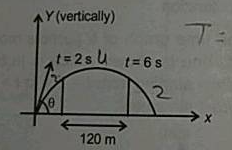
Two blocks of masses 10 g and 30 g are fastened to the ends of cord which passes over a frictionless pulley. The 10 g block rests on the table. What minimum force must be applied on the 10 g block to keep it on the table? What will be the tension in the cord under this condition? What will be the acceleration of the system and the tension in the cord when the force is withdrawn?
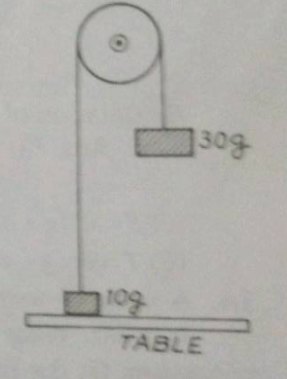
If block is initially at rest find direction in which it will start moving on application of forces shown& also find acceleration

How many orbitals are possible for $$ n = 4 $$?
Find acceleration vector of block.
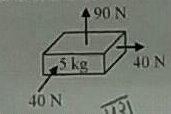
In the situation shown in figure the maximum value of horizontal force F to be applied on the block of mass 5 kg so that block A of mass A of mass 100 kg does not move upward the coefficient of static friction for contact surface of the block A is is 0.1 but the block B is placed on a smooth horizontal surface. If F =(774.6)x N. then find the value of x.
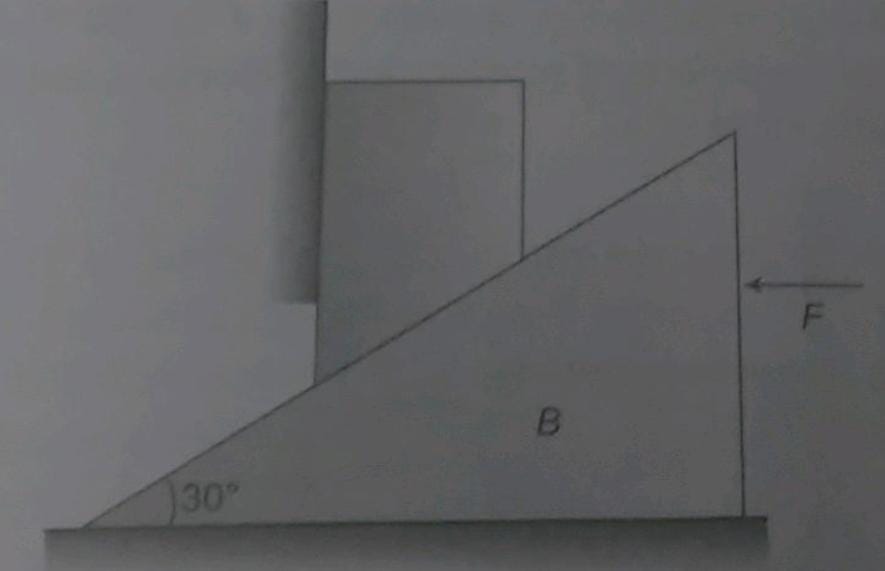
A block of mass 'M' connected to an elastic spring of force constant K performs S.H.M. with amplitude 'A' . At the instant when the block is passing through its equilibrium position a small block of mass m falls on M oscillate together then what is the
(i) amplitude of oscillation?
(ii) the magnitude of frictional force on 'm' at an extreme position?
A $$60 \mathrm{kg}$$ block slides along the top of a $$100 \mathrm{kg}$$ block. The lighter block has an acceleration of $$3.6 \mathrm{m} / \mathrm{s}^{2}$$ when a horizontal force $$\mathrm{F}=350 \mathrm{N}$$ is applied. Assuming there is no friction between the bottom $$100 \mathrm{kg}$$ block and the horizontal frictionless surface but there is friction between the blocks. Find the acceleration of the $$100 \mathrm{kg}$$ block during the time the $$60 \mathrm{kg}$$ block remains in contact.
Give the difference between the gravitational constant $$(G)$$ and acceleration due to gravity $$(g)$$ with reference of their value.
A block of mass $$4kg$$ is placed at the point $$A$$ of a rough track. If slightly pushed towards right, it stops at the point $$B$$ of the track. Calculate the work done by the frictional force on the block during its transit from $$A$$ and $$B$$.

Solve :
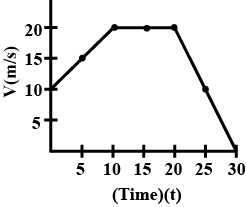
What is the work done?
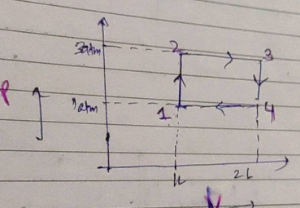
Obtain the relation between the magnitude of the linear (tangential) acceleration and angular acceleration in nonuniform circular motion.
The figure shows two masses $$M$$ and $$m$$ hanging from the ceiling, connected by springs with spring constant $$k_{1}$$ and $$k_{2}$$. The mass $$M$$ is subjected to a driving force $$F(t) = F_{0}\cos \omega t$$ in the downward direction.
a) $$(2\ points)$$ Use Newton's second law to find the coupled equations of motion for the two masses.
b) $$(3\ points)$$ Assuming solutions of the form $$x_{1} = A\cos \omega t$$ and $$x_{2} B\cos \omega t$$, find expressions for the steady-state amplitudes $$A$$ and $$B$$ in terms of $$\omega, F_{0}, M, m, k_{1}$$ and $$k_{2}$$.
c) $$(2\ points)$$ For $$\omega = \sqrt {k_{1}/M}$$ show that the amplitude of vibration of mass $$M$$ will be zero if $$k_{1}/ k_{2} = m/M$$.
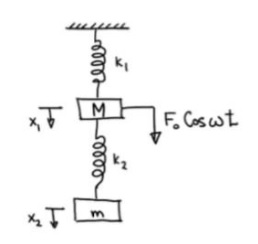
An aeroplane has a run of $$500\ m$$ to take off from the runway. It starts from rest and moves with constant acceleration to cover the runway in $$30\sec$$. What is the velocity of the aeroplane at the take off?
A particle tied to the end of a string oscillates along a circular arc in a vertical plane. The other end of the string is fixed at the centre of the circle. If the string has a breaking strength of twice the weight of the particle.
Find the acceleration of the particle at bottom and extreme.
Given that $$O_2O_1 = 0.5\,m, O_3O_1 = 0.3\,m.$$ Find $$m_1$$ for which system is in equilibrium.

At a certain height above the surface of the earth, the gravitational acceleration is $$90\%$$ of its value at the earth's surface. Determine the height above the earth's surface .(radius of the earth is $$6400km)$$
A body is projected from the surface of the earth so that is reaches at a height of $$10R.g=9.8m/s^2.$$ show that the velocity with which the body should be projected from the surface of earth is $$V=14\sqrt{\dfrac{R}{11}}$$.
If $$F=10mg$$, find tension in each sting.
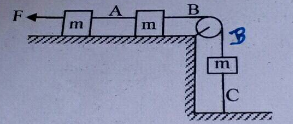
Three blocks of masses $$m_1 = 3m, m_2 = 2m$$ and $$m_3 = m$$ are placed in contact on a horizontal frictionless surface as shown in Figure. A horizontal force F is applied to $$m_1$$ as shown. Match items in column I with those in column II.
| Column I | Column II |
| A) Net force acting on $$m_2$$ if F = 12 N | p) 1 N |
| B) Net force acting on $$m_2$$ if F = 6 N | q) 3 N |
| C) Net force acting on $$m_3$$ if F = 12 N | r) 2 N |
| D) Net force acting on $$m_3$$ if F = 6 N | s) 4 N |
